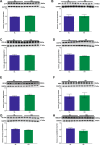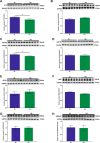Chronic Exposure to High Altitude: Synaptic, Astroglial and Memory Changes
- PMID: 31712561
- PMCID: PMC6848138
- DOI: 10.1038/s41598-019-52563-1
Chronic Exposure to High Altitude: Synaptic, Astroglial and Memory Changes
Abstract
Long-term operations carried out at high altitude (HA) by military personnel, pilots, and astronauts may trigger health complications. In particular, chronic exposure to high altitude (CEHA) has been associated with deficits in cognitive function. In this study, we found that mice exposed to chronic HA (5000 m for 12 weeks) exhibited deficits in learning and memory associated with hippocampal function and were linked with changes in the expression of synaptic proteins across various regions of the brain. Specifically, we found decreased levels of synaptophysin (SYP) (p < 0.05) and spinophilin (SPH) (p < 0.05) in the olfactory cortex, post synaptic density-95 (PSD-95) (p < 0.05), growth associated protein 43 (GAP43) (p < 0.05), glial fibrillary acidic protein (GFAP) (p < 0.05) in the cerebellum, and SYP (p < 0.05) and PSD-95 (p < 0.05) in the brainstem. Ultrastructural analyses of synaptic density and morphology in the hippocampus did not reveal any differences in CEHA mice compared to SL mice. Our data are novel and suggest that CEHA exposure leads to cognitive impairment in conjunction with neuroanatomically-based molecular changes in synaptic protein levels and astroglial cell marker in a region specific manner. We hypothesize that these new findings are part of highly complex molecular and neuroplasticity mechanisms underlying neuroadaptation response that occurs in brains when chronically exposed to HA.
Conflict of interest statement
The authors declare no competing interests.
Figures






References
Publication types
MeSH terms
LinkOut - more resources
Full Text Sources
Medical
Miscellaneous

